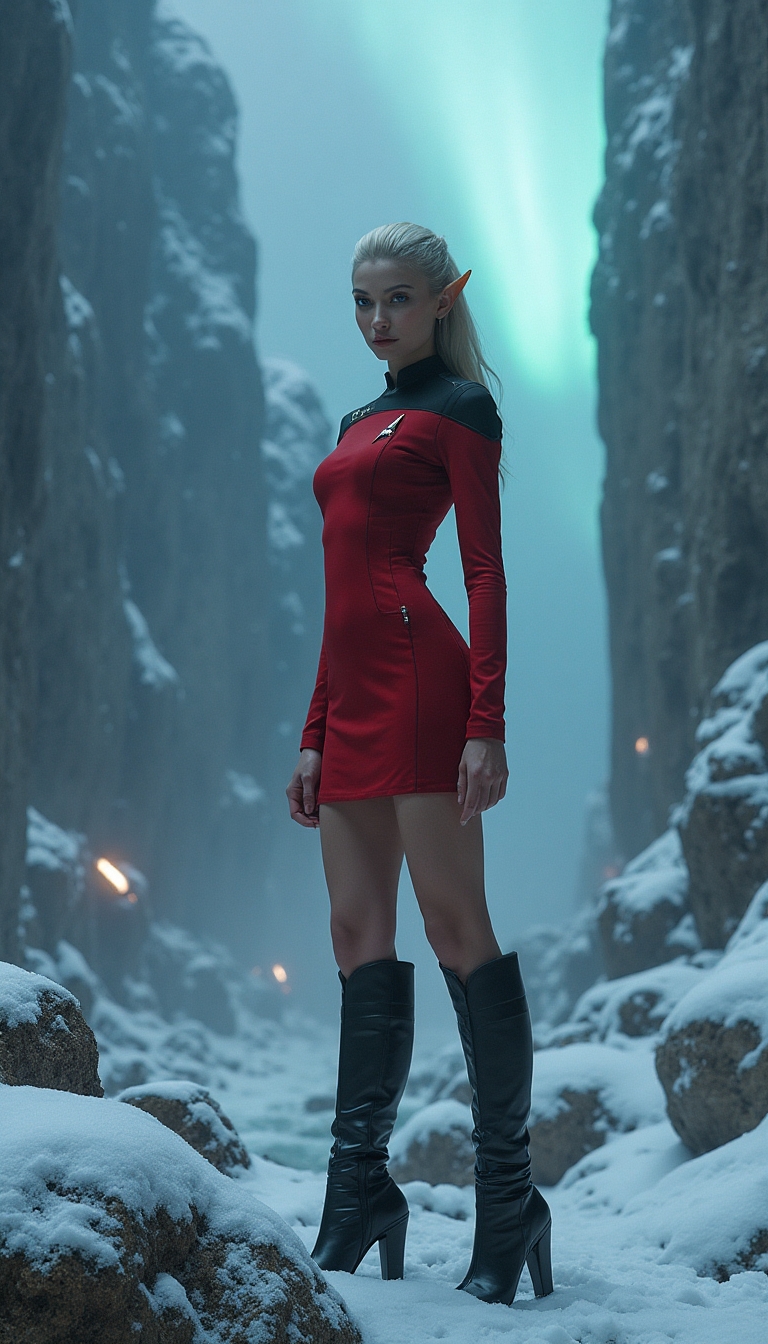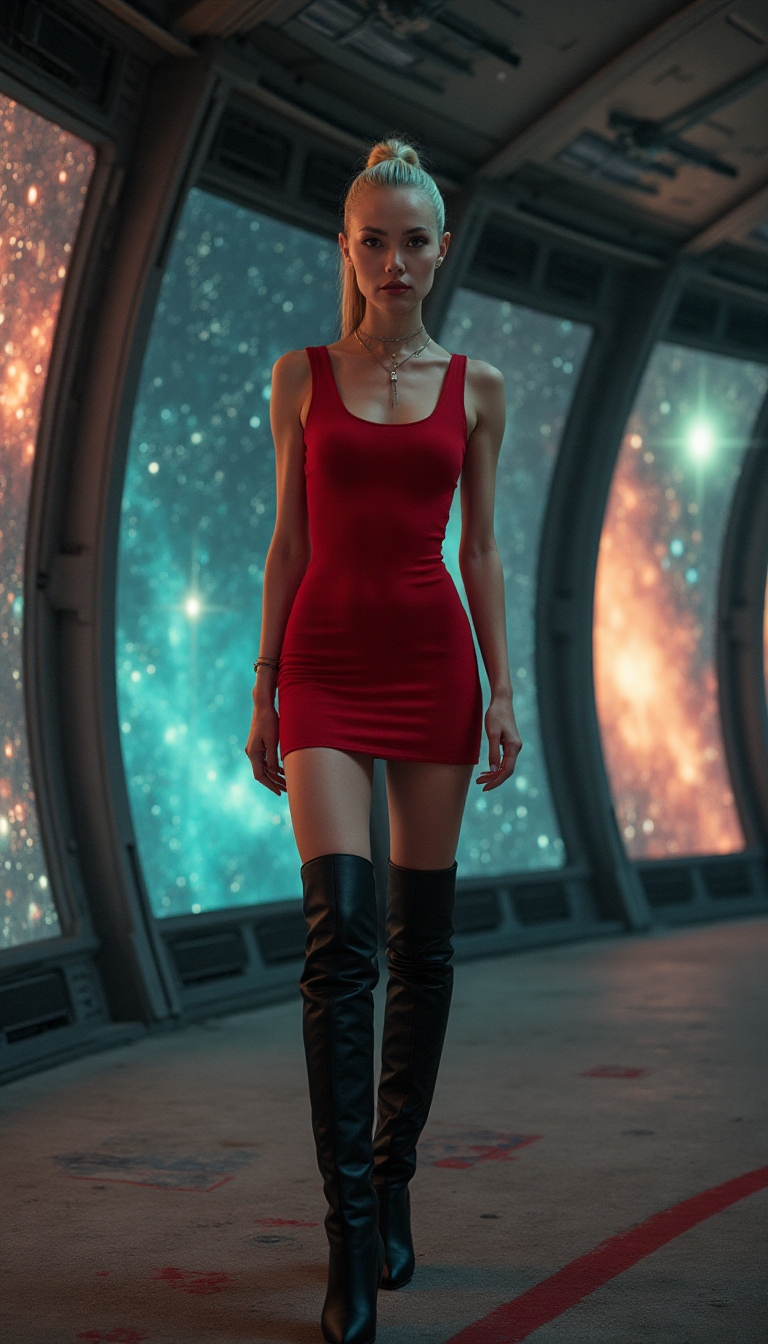The Life of a Trill Botanical Terraforming Specialist: Crafting Green Worlds Among Stars
Imagine gliding through planets under vibrant nebulae, where every breath of unregulated atmosphere becomes a part of your mission. This is the life of a Botanical Terraforming Specialist — a role that interlaces the essence of nature with the technological prowess of the United Federation of Planets. The galaxy is vast and filled with potential, yet, terraforming uninhabitable worlds into rich, thriving ecosystems remains one of the most profound challenges facing early Starfleet. Within this high-stakes domain, the Trill — a species renowned for their androgynous beauty and a unique symbiotic relationship — elegantly stride forward to meet the calling of their destiny.
What Does a Botanical Terraforming Specialist Do?
A Botanical Terraforming Specialist primarily focuses on transforming barren or inhospitable planets into verdant environments that can support life. Working closely with scientists, engineers, and bioengineers, they utilize advanced technology and botanical knowledge to analyze soil composition, climate, and existing flora and fauna. Their role encompasses developing self-sustaining ecosystems, launching bioengineered plant species, and monitoring ecological balance. In the sometimes chaotic growth of new worlds, they ensure that native beings and essential life forms can coexist in harmony.
Character Overview:
- Name: Talia Renath
- Species: Trill
- Occupation: Botanical Terraforming Specialist
- Era: Early Federation Expansion (2150s – 2200s)
- Location: Variety of planetary systems across Alpha and Beta Quadrants
- Affiliation: Starfleet
- Gear/style: Starfleet environmental suits, botanical field kits, personal tricorder equipped with biofeedback sensors
- Known logs/missions: Terraforming missions on Ceti Alpha V and Kxal IV
- Related videos: Explore the Terraforming Process
A Day in the Life
Picture Talia on a mission in her Environmental Studies Vessel, a sleek NX-class ship outfitted with cutting-edge bioengineering labs. Onboard, she meets with fellow specialists: engineers hacking away at soil samples, scientists analyzing atmospheric conditions, and fellow Trill sharing tales of their symbionts’ past lives. Talia, unlike many who dwell on the technical complexities, finds inspiration in the soul of the biosphere.
Each morning begins with a ritual: she meditates in a holographic garden, where light filters through intricate foliage — a soothing start that harmonizes her dual nature. Her symbiont, Durran—previously a distinguished ecologist—guides her through their shared memories, augmenting Talia’s understanding of interspecies relationships.
“Imagine a planet where foliage sings to the stars,” she muses to her team during lunch. “If we just add a dash of Andorian shrubbery, that world could become a thriving ecosystem!” Her enthusiasm is contagious, drawing smiles and laughter amid the complexities of microbe strategies and growth simulations.
Inner Conflicts and Challenges
Yet, the path of a Botanical Terraforming Specialist is fraught with challenges. The politics of expansion loom large, especially during the precarious era following the Romulan War. The Federation is young, still establishing a fragile harmony among diverse species like the Vulcans, Andorians, and Tellarites. There's an anxiety that keeps Talia awake at night: is she merely a creator, or an unwitting oppressor, molding ecosystems only in response to Federation desires?
As she navigates this morally complex landscape, Talia often reflects on the duality of her being. The Trill's symbiotic existence manifests alongside the responsibility of placing her needs as a host within the greater context of her community’s ambitions. She considers: What if challenging ecosystems were left untouched to evolve naturally? Would they flourish or falter without our intervention?
Linked Logs of Experience
This internal struggle became poignant during her mission on Kxal IV. After months of laboring over diverse eco-balance, data showed that certain introduced species were doing well, but others were creating a destabilized feedback loop. Talia stood in the thick of a holographic eco-simulation chamber, clutching her tricorder. “We need to act now,” she said firmly, “or our well-intentioned interference may lead to the extinction of several indigenous species.”
Decisions like these often seep into her dreams, cloaked in the haunting beauty of alien landscapes: sun-bleached horizons, jungles that breathe, mountains whispering age-old stories. Talia knows her work can reshape destinies—but at what cost?
Cultural Reflection: The Trill Experience
The essence of being Trill goes beyond hosting a symbiont. It represents a unique perspective on growth and interconnectedness. Trill women, in particular, embrace their dual identities, often championing balance and respect toward nature due to their shared memories and the lifetimes of knowledge passed down through generations. This identity could be likened to ancient Earth’s passage of wisdom through storytelling, where both the new and the old intertwine seamlessly.
The Galactic Future
As we approach the dawn of the 23rd Century, the early lessons woven into the fabric of planetary engineering may echo on distant worlds. Talia, and thousands like her, metaphorically stand at the edge of a green abyss — each day the galaxy demands their skills. Yet, these women face not only physical challenges but also the philosophical quandaries shaping future Federation policies.
Within the realms of cosmic exploration, as Starfleet and Early Federation explore new lives and new civilizations, questions arise: Is it beneficial to introduce alien flora in pursuit of utopia? Can ecological systems balance naturally? What echoes in the winds of unvisited realms?
Engaging Questions:
- What impact does a single onlooker from a different species have on an eco-balance they have yet to fully understand?
- Are we merely trying to replicate our known comforts on alien worlds, or do we listen deeply to their untold narratives of existence?
- Will the intermingling of species lead to true integration, or remain merely a distant echo of our past endeavors?
Join us in this conversation — share, like, and challenge your understanding of our galaxy's intertwined lives. Are we all just terraformers within our ecosystems, nurturing or potentially stifling growth?
For deep-dive stories and future transmissions from the edges of the universe, subscribe to: the "Shining City on the Holoweb" and join the dialogue in iNthacity. Your voice matters.
Disclaimer: This article may contain affiliate links. If you click on these links and make a purchase, we may receive a commission at no additional cost to you. Our recommendations and reviews are always independent and objective, aiming to provide you with the best information and resources.
Get Exclusive Stories, Photos, Art & Offers - Subscribe Today!
























Post Comment
You must be logged in to post a comment.